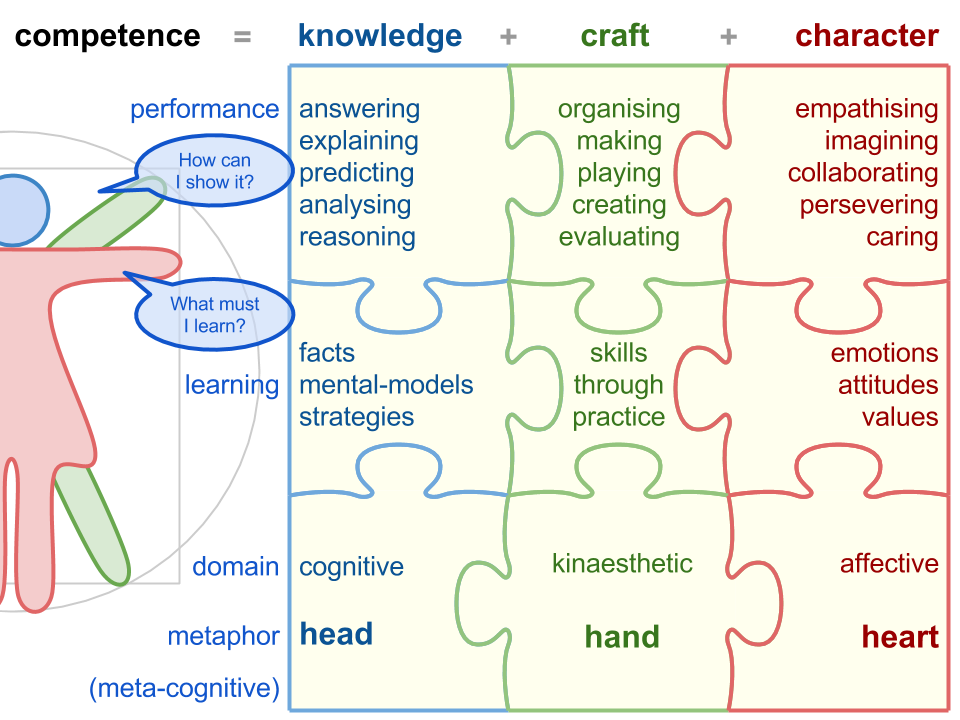
I have been re-working this diagram for some time, but recently discovered the simplicity of using the metaphor of head, hand and heart to remember it, thanks to colleague Joy Hooper. On searching I find many different angles on this: for example Julia Singleton, and by J.D. Meir, but I feel I am not abusing their ideas too much to find my own meaning, expressed in this diagram.
My purpose is to guide the design of education, in this case by framing learning outcomes and acting as a structured and holistic check-list. It is intended to be simpler, more holistic and interdependent than the rich framework designed by committee under the direction of Bloom and his colleagues. I also wish to avoid the notion of hierarchy of difficulty which Bloom’s taxonomy implies and which then becomes an inappropriate guide to progression.
In my version, the overall learning outcome is that the learner is competent – effective in using their capacities to achieve. Such competence is a combination of knowledge, craft and character.
For example, to produce a group story about a butterfly’s life-cycle, one might be involved in explaining the scientific phenomenon through making a poster to form a narrative and collaborating with others. Each of these performances are combined seamlessly in life and interact as the work proceeds:
- To explain the story one must learn the facts of the butterfly’s life-cycle and construct a mental model of how transformation from egg to butterfly takes place in dynamic sequence.
- To make the poster, one must learn skills through practice using tools and media.
- To collaborate one must master emotions and manage attitudes towards others.
So, my intent is that when designing and educational resource or activity, that one considers as many of these factors as possible or at least can say why they are not relevant to the task in hand.

2 Replies to “Competence = knowledge + craft + character”